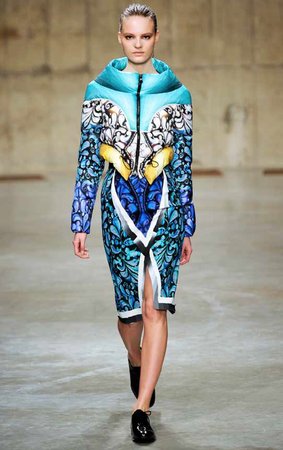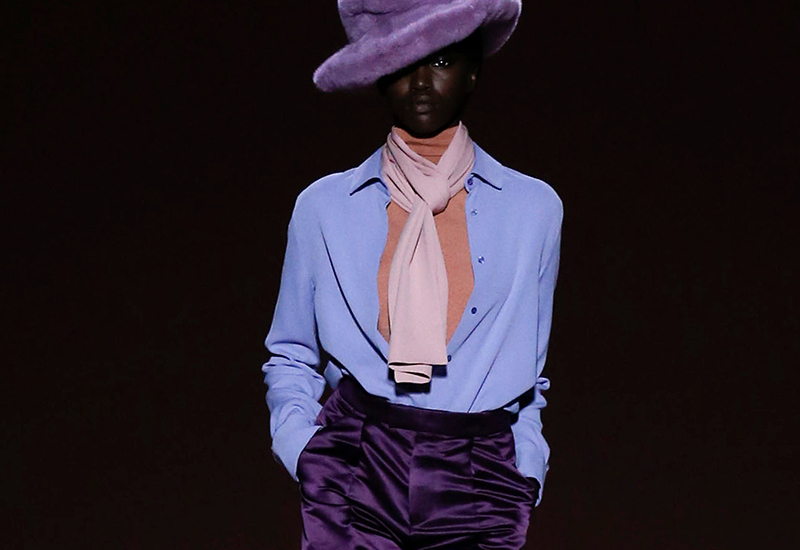Top Wardrobe Investments to Make Right Now with Sedgars
Wiki Article
The Influence of Lasting Practices on Modern Fashion Styles
Lasting practices have actually improved modern fashion, driving a shift in the direction of green products and moral manufacturing. Designers now favor natural cotton, recycled materials, and cutting-edge textiles. Upcycling has actually transformed waste into distinct garments, while transparency in sourcing has actually come to be essential. This evolution reflects an expanding understanding amongst customers regarding their buying options. As the market adapts, brand-new patterns emerge that difficulty typical aesthetic appeals. What might the future hold for style in this framework?The Increase of Eco-Friendly Products
How have environment-friendly materials transformed the style market? The appearance of environment-friendly products has substantially improved fashion, driving brands to reevaluate their sourcing and production processes. These sustainable alternatives, including organic cotton, hemp, and recycled polyester, use a reduced environmental footprint compared to typical fabrics. Designers are currently prioritizing these products, identifying that consumers progressively prefer brands dedicated to sustainability.This change has resulted in ingenious strategies, where style residences experiment with naturally degradable materials and all-natural dyes, enhancing both aesthetic charm and environmental obligation. In enhancement, cooperations between designers and sustainability-focused companies have actually increased the assimilation of eco-friendly products right into mainstream collections.As an outcome, the garment industry is experiencing a extensive but gradual modification, relocating towards an extra sustainable future. This dedication not only reflects progressing consumer values however also shows the potential for style to lead in ecological stewardship.Upcycling: Transforming Waste Into Style
Upcycling has actually emerged as a transformative force in the garment industry, transforming discarded materials right into preferable garments and accessories. This cutting-edge method not just lowers waste but likewise urges creativity and originality among designers. By repurposing products such as old garments, textile scraps, and also non-textile materials, upcycling produces special items that tell a story, showing private design and ecological consciousness.Many independent developers and contemporary brand names have accepted upcycling as a core technique, interesting customers that value sustainability and uniqueness. The procedure usually involves techniques like patchwork, reconfiguration, or embellishment, enabling countless opportunities in design. As a result, upcycled style reverberates with those seeking to make eco accountable selections while still expressing individual aesthetics.In essence, upcycling not just reduces the ecological influence of fashion waste but likewise promotes a brand-new society of advancement and recognition for craftsmanship within the industry.Ethical Manufacturing: Fair Labor and Openness
Honest manufacturing in vogue highlights the importance of reasonable wages for workers, making sure that workers get just compensation for their efforts. Transparency in supply chains is vital, enabling consumers to understand the beginnings of their garments and the conditions under which they are made. Additionally, moral sourcing techniques advertise obligation in selecting materials, enhancing the commitment to sustainability and social justice.Fair Wages for Employees
While the garment industry increasingly embraces lasting methods, making sure reasonable wages for workers continues to be a critical element of ethical production. Fair incomes not just encourage workers but likewise boost the overall high quality of life for individuals in the supply chain. Numerous brands are now embracing policies that prioritize equitable payment, recognizing that a sustainable future can not be improved exploitation. By committing to reasonable pay, companies promote commitment and boost productivity amongst their employees (Designer Store Sedgars). Furthermore, customers are becoming much more aware of labor issues and are significantly requiring openness regarding workers' legal rights. Because of this, brand names that focus on reasonable incomes are not just aligning with honest requirements however are additionally placing themselves competitively in a market that worths social responsibilityTransparency in Supply Chains
The dedication to reasonable wages is intrinsically connected to the wider issue of openness in supply chains within the garment industry. Transparency warranties that customers are informed regarding the beginnings of their apparel and the conditions under which they are created. Brands that focus on openness typically release comprehensive records detailing their supply chain processes, labor techniques, and sourcing of materials. This openness fosters trust and commitment amongst customers who progressively demand ethical practices. Transparency aids to hold firms liable for their labor methods, enabling analysis and encouraging renovations. By exposing the intricacies of their supply chains, brands can add to a more fair style ecosystem, eventually advertising not only ethical manufacturing but also lasting usage among their clients.
Honest Sourcing Practices
As consumers become more aware of the influence of their purchasing choices, brand names are significantly taking on honest sourcing methods that prioritize fair labor and ecological sustainability. These techniques involve making certain that employees obtain fair earnings, secure working conditions, and are treated with self-respect. Numerous style firms are moving away from exploitative labor methods and are rather teaming up with suppliers who abide by moral standards. Transparency in sourcing additional improves customer count on, as brand names divulge their supply chain practices, enabling customers to make educated selections. This shift in the direction of ethical sourcing not only adds to social duty but likewise reverberates with an expanding group that values sustainability in fashion. Because of this, moral sourcing is coming to be a defining attribute of modern fashion brands.The Duty of Technology in Sustainable Fashion
Although the style industry has long been linked with waste and air pollution, modern technology is progressively changing it right into a more sustainable market. Developments such as 3D printing allow developers to produce garments with less product waste, while digital fabric printing permits for on-demand manufacturing, minimizing excess inventory. In addition, improvements in recycling innovations are assisting in the repurposing of textiles, decreasing land fill contributions.In addition, information analytics and fabricated intelligence help brand names anticipate trends a lot more precisely, ensuring they produce just what is required. Blockchain innovation improves transparency in supply chains, allowing consumers to trace the origins of their clothing and confirm lasting practices. Wearable technology is evolving, promoting resilience and functionality in style items. Via these technological developments, the garment industry is slowly adopting an extra round economic climate version, fostering sustainable methods that can redefine its environmental influence.
Conscious Consumerism: Shifting Buyer Mindsets
Conscious consumerism is reshaping the apparel industry as customers increasingly focus on moral style options. This shift is driven by a demand for transparency, compelling brands to reveal their methods and supply chains. Consequently, brand loyalty is developing, with consumers more probable to support those that align with their worths.Moral Fashion Choices
Shifting buyer state of minds towards ethical style selections reflects a growing awareness of the effect of consumer behavior on the atmosphere and society. Consumers are increasingly prioritizing brand names that stress moral production practices, sustainable materials, and reasonable labor conditions. This change is sustained by a desire to sustain companies that straighten with individual values, advertising a more liable apparel Sedgars industry. Therefore, brand names are adapting their strategies, including transparency and sustainability right into their core missions. Ethical style options not just challenge typical retail practices yet likewise urge customers to show on the lifecycle of their garments. This shift symbolizes a collective step in the direction of a much more aware approach to style, where the effects of purchases prolong past mere aesthetics to include more comprehensive social and environmental considerations.Influence of Transparency

Brand Commitment Change
What drives customers to stay devoted to brand names in today's style landscape? Increasingly, sustainability plays a critical function. As understanding of ecological issues grows, customers are gravitating towards brand names that show honest practices and transparency. This shift towards conscious consumerism has resulted in a reevaluation of conventional brand loyalty, where values align more closely with personal values. Brand names that focus on lasting products, reasonable labor methods, and eco-friendly production methods are commonly awarded with customer loyalty. This evolution is reflected in purchasing decisions, as buyers are more ready to support brands that contribute positively to society. Sustainability has actually become not just an advertising tool, but a specifying aspect in establishing long-term brand links with a much more socially mindful and discerning customer base. Conscious The Impact of Lasting Style on Patterns As customers significantly focus on sustainability, the fashion business is experiencing a significant improvement in fads. This shift has brought about the increase of environment-friendly products, such as organic cotton, recycled polyester, and cutting-edge textiles stemmed from sustainable sources. Developers are increasingly concentrated on creating flexible, durable garments that motivate conscious usage, relocating away from rapid style's short lived styles.Moreover, honest practices are becoming a hallmark of brand identification, with several companies highlighting their commitment to fair labor and ecological stewardship. The impact of sustainable fashion is additionally evident in the popularity of second hand shopping and garments swaps, advertising a circular economy and minimizing waste.Fashion programs and projects now often feature lasting collections, stressing the aesthetic charm of eco-conscious choices. In general, the influence of lasting fashion on patterns mirrors a broader societal shift towards responsible consumerism, shaping the future of the market in profound methods.Future Advancements in Eco-Conscious Layout
The advancement of sustainable fashion trends lays the groundwork for future developments in eco-conscious style. As consumers increasingly prioritize environmental responsibility, developers are discovering advanced materials and techniques. Biodegradable fabrics, such as mycelium and algae-based textiles, are gaining traction, promising to decrease waste and reliance on petroleum-based fibers.Moreover, innovations in modern technology are paving the way for ingenious manufacturing techniques. 3D printing, for circumstances, allows for on-demand manufacturing, minimizing excess supply and source consumption. Round style models are likewise arising, stressing recycling and upcycling, allowing garments to have actually expanded life cycles.Collaboration in between brand names and technology companies is crucial for these technologies. By leveraging information analytics and expert system, designers can produce more sustainable supply chains and lower their carbon footprints. As eco-conscious practices continue to develop, they essentially transform the fashion landscape, pushing the borders of creativity while securing the earth.Regularly Asked Inquiries
Exactly How Can I Identify Sustainable Style Brands When Purchasing?
To identify lasting fashion brand names while shopping, one must search for qualifications, look at materials, examine manufacturing openness, and study brand values. Premium Fashion Sedgars. Engaging with customer testimonials and sustainability records can better lead informed acquiring choicesAre Second-Hand Clothing Considered Lasting Fashion?
Second-hand garments are usually considered sustainable fashion because of their role in decreasing waste and extending the lifecycle of garments. By buying pre-owned products, consumers add to a much more environment-friendly garments economy.What Is the Ecological Impact of Rapid Style?
The environmental impact of quick style is substantial, adding to pollution, excessive waste, and resource deficiency. The sector's fast production cycles often prioritize revenue over ecological sustainability, exacerbating climate change and harming communities worldwide.Exactly How Do Lasting Practices Affect Style Pricing?
Lasting methods frequently lead to greater manufacturing expenses due to ethical sourcing and environment-friendly materials. Sedgars. Consequently, style prices might increase, showing the investment in ecological obligation and fair labor practices, which can impact consumer investing in choicesCan Lasting Fashion Be Fashionable and Trendy?
The concern of whether lasting fashion can be elegant and fashionable typically arises. Numerous developers now blend eco-friendly materials with ingenious layouts, showing that sustainability and modern visual appeals can exist side-by-side, appealing to a fashion-conscious audience. Sustainable methods have actually improved modern fashion, driving a shift towards green products and ethical production. While the fashion market significantly embraces lasting techniques, ensuring fair salaries for employees stays a critical component of honest manufacturing. Aware consumerism is improving the fashion market as customers significantly prioritize honest style selections. The influence of lasting style is also obvious in the appeal of second hand purchasing and apparel swaps, promoting a round economic climate and reducing waste.Fashion shows and campaigns currently usually include lasting collections, emphasizing the aesthetic appeal of eco-conscious choices. To determine sustainable style brands while shopping, one need to look for qualifications, inspect products, examine production openness, and research study brand worths.Report this wiki page